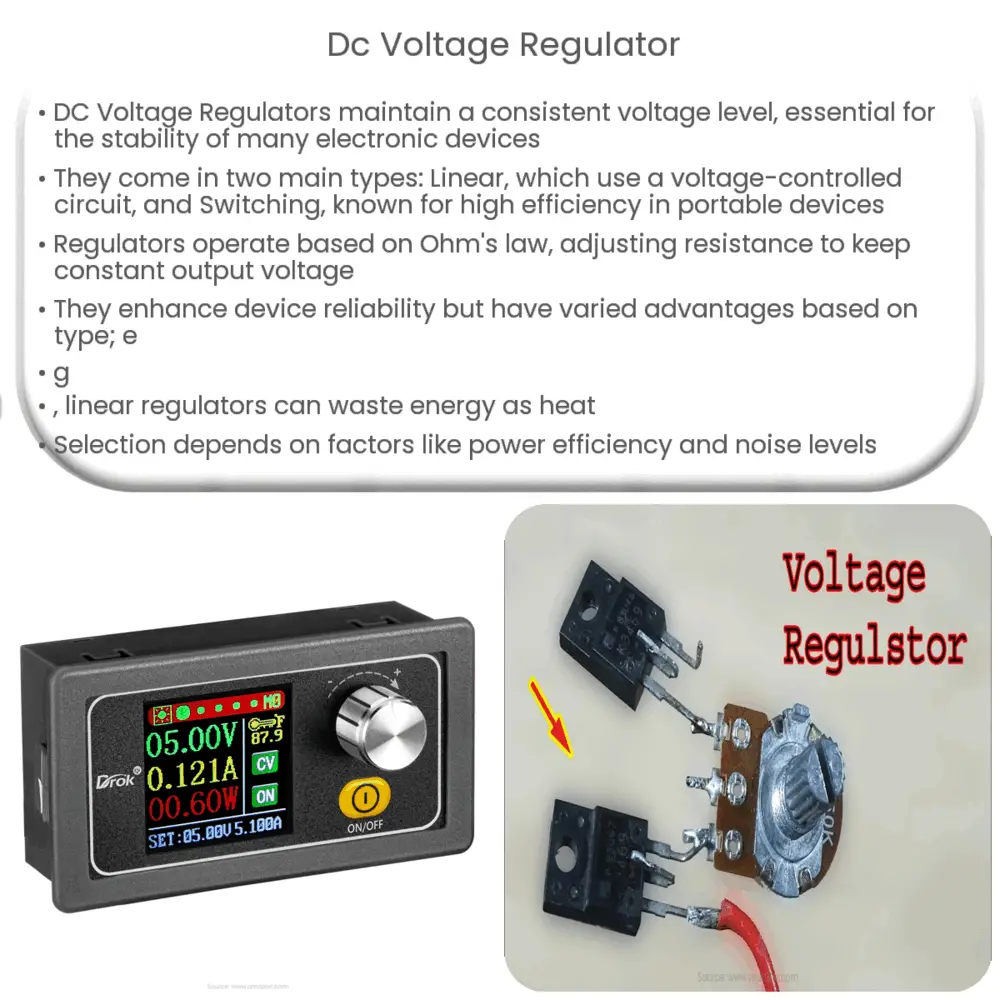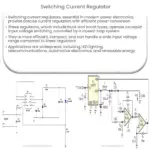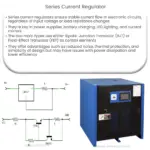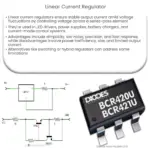Explore the world of DC Voltage Regulators: their function, types, key components, advantages and disadvantages, and selection criteria.

Introduction to DC Voltage Regulators
A Direct Current (DC) Voltage Regulator is an integral part of power electronic systems and plays a crucial role in managing the output voltage. It is essentially a device designed to automatically maintain a constant voltage level. This article aims to provide an insightful overview of DC Voltage Regulators, their function, types, and significance.
Functionality of DC Voltage Regulators
Primarily, a DC Voltage Regulator operates by accepting an input voltage that may vary over a given range and efficiently outputs a constant voltage. This consistency is paramount in many electronic devices that require stable and reliable power supply. Fluctuations in power can lead to device malfunction, and in some cases, even permanent damage. Therefore, DC Voltage Regulators are critical to ensuring the longevity and optimal functioning of these devices.
Types of DC Voltage Regulators
- Linear Voltage Regulators: These regulators operate by using a voltage-controlled circuit at their output stage. They have a transistor that acts as a variable resistor, controlling voltage drop and, hence, the output voltage.
- Switching Voltage Regulators: These are more complex than linear regulators. They function by storing energy and subsequently releasing it at a different voltage. They offer high efficiency and are commonly used in portable devices like mobile phones and laptops.
The Importance of DC Voltage Regulators
DC Voltage Regulators are indispensable in a plethora of electronic devices. They play a significant role in applications where power stability is essential. Some of these applications include, but are not limited to, power supplies for laptops, mobile devices, electronic components in vehicles, and even in renewable energy systems like solar panels and wind turbines.
How DC Voltage Regulators Work
The working principle of a DC Voltage Regulator revolves around Ohm’s law and the concept of voltage division. As input voltage varies, the regulator adjusts the resistance to maintain a constant output voltage. This is accomplished by a feedback loop that continuously monitors the output voltage. If it detects any deviation from the desired value, it adjusts the resistance in the circuit to compensate for this change.
Key Components of DC Voltage Regulators
While the design may vary between different types of DC Voltage Regulators, certain key components are typically found in most regulators. These include:
- Control Element: This is often a transistor that serves as a variable resistor. It adjusts the resistance based on the output voltage, effectively controlling the output.
- Sensing Element: This element constantly monitors the output voltage and provides feedback to the control element.
- Reference Element: The reference element provides the benchmark or reference voltage to which the output voltage is compared.
Advantages and Disadvantages of DC Voltage Regulators
DC Voltage Regulators offer several benefits, including improved device reliability and longevity, reduced risk of device damage, and increased power efficiency. However, they also have certain disadvantages. For instance, linear regulators can waste energy as heat if the input voltage is much higher than the required output voltage. On the other hand, switching regulators, while more efficient, can introduce electrical noise into the system due to their switching nature.
Choosing the Right DC Voltage Regulator
Choosing the right DC Voltage Regulator depends on various factors like the input voltage range, desired output voltage, power efficiency requirement, and the acceptable level of noise. For applications where power efficiency is a primary concern, switching regulators are often the preferred choice. Conversely, in noise-sensitive applications, linear regulators are usually more suitable due to their quieter operation.
Conclusion
In conclusion, DC Voltage Regulators are pivotal in the realm of electronic devices, where they ensure a consistent and stable power supply. With an understanding of their functionality, types, advantages, and disadvantages, users can make informed decisions when selecting the appropriate regulator for their specific needs. While their choice might depend on various factors, the ultimate aim remains the same: to maintain a steady voltage output, ensuring optimal device performance and longevity.




